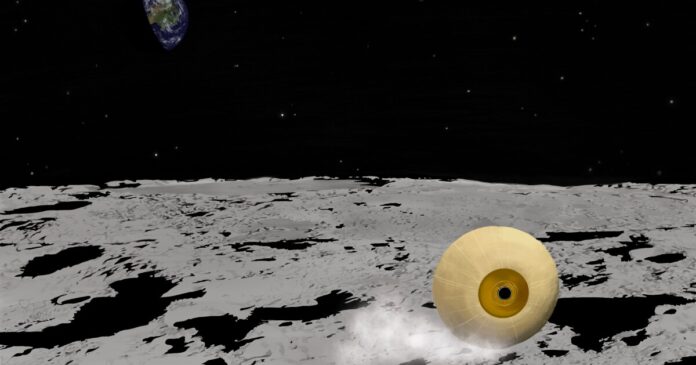We’re used to rovers exploring the Moon or Mars to have legs and wheels for moving around, but a team at Texas A&M led by Robert Ambrose wants to go more geometrical with a new mobile robot shaped like a ball for literally rolling about rough terrain.
If you’re into vintage cult television, you’ve probably heard of The Prisoner – a bizarre mixture of spy thriller, science fiction, political allegory, and psychedelic weirdness that has yet to be surpassed. Following the adventures of a nameless kidnapped secret agent known only as No. 6, who’d been spirited off to a place called The Village, it was famous for its many strange and mysterious dramatic touches and men in wetsuits riding folding bicycles.
Another strange inclusion was a strange robot that looked like a giant white rubber globe that bounced and rolled around the place, engulfing and suffocating anyone who tried to escape or just got out of line. It was absolutely terrifying to me as a child as well as being a remarkable bit of instant innovation because originally the thing was supposed to be a robotic go-kart, but that broke down the first time on set, so the prop man came up with a substitute using a weather balloon weighted down with water and moved with a giant fan off camera.
RoboBall
Inspired by this 60s TV classic or not, the RoboBall project began at NASA in 2003 and when Ambrose came to Texas A&M Robotics and Automation Design Lab (RAD Lab) he revived it along with graduate students Rishi Jangale and Derek Pravecek and funding from the Chancellor’s Research Initiative and Governor’s University Research Initiative.
The results were the prototypes RoboBall II and RoboBall III that are designed to explore how such spherical robots could be used to explore rough terrain and craters on the Moon.
RoboBall II is essentially the lab bench version with a 2-ft (61-cm) diameter. It has a soft outer shell and inside is a propulsion system composed of a pendulum and motors attached to an axle. As the pendulum swings, it transfers momentum to the sphere, causing it to roll in the desired direction by altering the angle of the pendulum. In tests, it was able to traverse grass, gravel, sand, and even water at speeds of up to 20 mph (32 km/h).
Emily Oswald/Texas A&M Engineering
RoboBall III is the deluxe version coming in at a diameter of 6 ft (183 cm) and is configured for more practical use as well as the ability to carry a payload of sensors, cameras, and sampling tools. Like RoboBall II, it shares the ability to roll around and it can also inflate and deflate itself to alter its traction so it can operate on a variety of surfaces as well as reducing wear and tear.
And, of course, tipping over is never a problem because there is no right-side up.
According to the team, the next step is to carry out field tests on the beaches of Galveston to test water-to-land transitions and continuing work on how to integrate payload modules. In addition, the team is looking at terrestrial applications, including search and rescue.
“Imagine a swarm of these balls deployed after a hurricane,” said Jangale. “They could map flooded areas, find survivors and bring back essential data – all without risking human lives.”
Source: Texas A&M


